Nickname(s) Bury | Other name Bury | |
 | ||
Born November 30, 1913Jabłonka, Podkarpackie Voivodeship ( 1913-11-30 ) Awards Order of Virtuti Militari (Golden Cross) Order of Virtuti Militari (Silver Cross) Cross of Valour Cross of Merit with Swords (Gold) Cross of Merit (Bronze) Similar Zygmunt Szendzielarz, Józef Kuraś, Katarzyna Bonda | ||
Kpt romuald rajs bury wiersz z herberta wilki w wykonaniu molika pi taka i w asnowolskiego
Romuald Rajs, nom de guerre "Bury", (30 November 1913 – 30 December 1949) was a Polish soldier, partisan and anti-communist insurgent. Member of Home Army (AK) and National Military Union (NZW), he was sentenced to death in a show trial held by the Polish communist government in 1949, charged with membership in delegalized NZW, and the 1946 killings of Polish Belarusians. Rajs denied the charges of war crimes, and was executed in prison three months later. His death penalty was nullified by the Military Court of Warsaw in 1995, as a communist crime.
Contents
- Kpt romuald rajs bury wiersz z herberta wilki w wykonaniu molika pi taka i w asnowolskiego
- Life
- World War II
- National Military Union
- Actions in Zaleszczany Wlka and Puchay Stare
- Action in SzpakiZanie
- Arrest and execution
- Posthumous history
- References
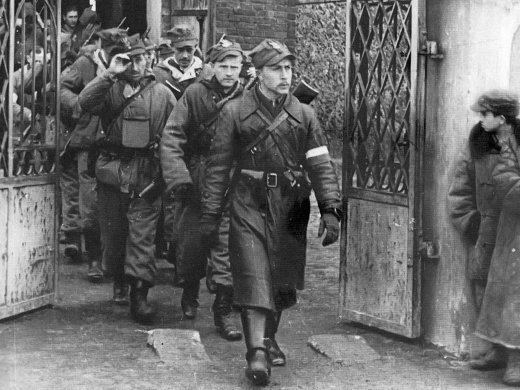
Romuald Rajs and his co-conspirator and deputy, Lieutenant Kazimierz Chmielowski nom de guerre "Rekin", became the subject of a 475-page monograph by Jerzy Kułak, historian from the IPN Branch in Białystok, titled Executed Battalion. Monograph of the 3rd Wilno Brigade of NZW - Białystok Region 1945-1946 (Rozstrzelany Oddział. Monografia 3 Wileńskiej Brygady NZW - Białostocczyzna 1945-1946) published in 2007 and reprinted in 2015 as Hardcover by Wydawnictwo Mireki with 678 pages.

Life
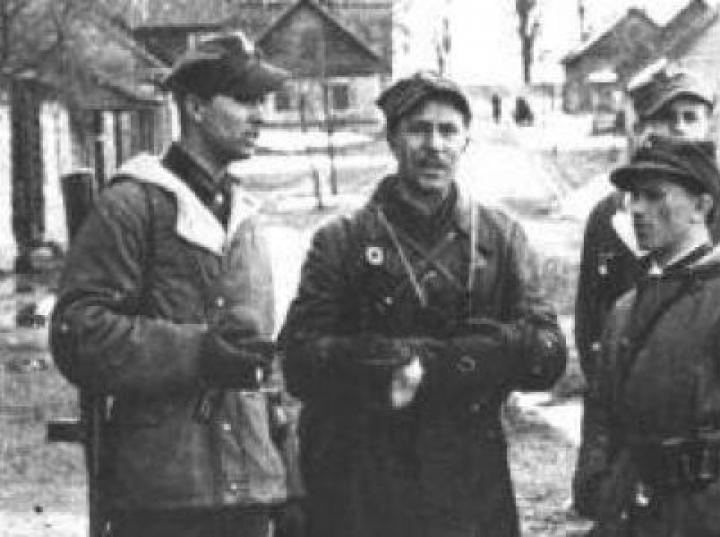
Romuald Adam Rajs was born in the village of Jabłonka, Podkarpackie Voivodeship under the Austrian Partition. He graduated from high school in Sanok, in the newly reborn sovereign Poland.
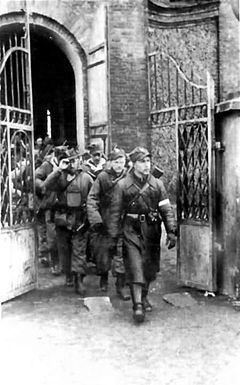
In 1934 Rajs graduated from the School for Non-commissioned Officers in Konin and took the parachute course in Biedrusk near Poznań. With the rank of Corporal he was assigned to the 85 Infantry Regiment in Nowa Wilejka, Wilno Voivodeship, and in 1936 joined the 13 Infantry Regiment of the Polish Army. In 1938 he was transferred to the cavalry reconnaissance platoon of the 85 Infantry Regiment.
World War II
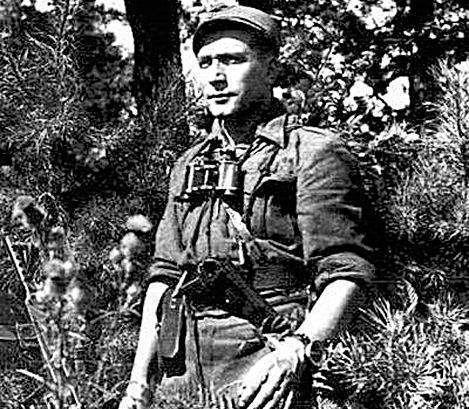
During the September campaign of 1939 Rajs, and his Regiment, fought the invading Germans near Łowicz with the Polish Prusy Army (Armia Prusy) under Gen. Stefan Dąb-Biernacki. His unit was defeated on 15 September in the area of Lublin. On 17 September Soviet Union invaded Poland from the east. The men of his regiment were disarmed by Belarusians in the area of Bereza Kartuska. Rajs relocated to Wilno. He joined the Polish resistance movement, serving with the Union of Armed Struggle (ZWZ), and the Wilno branch of Armia Krajowa for two years. Since 1943 he was a commander of the 1st company of AK Wilno Brigade. He fought both, Nazi Germans and the Lithuanian collaborators.
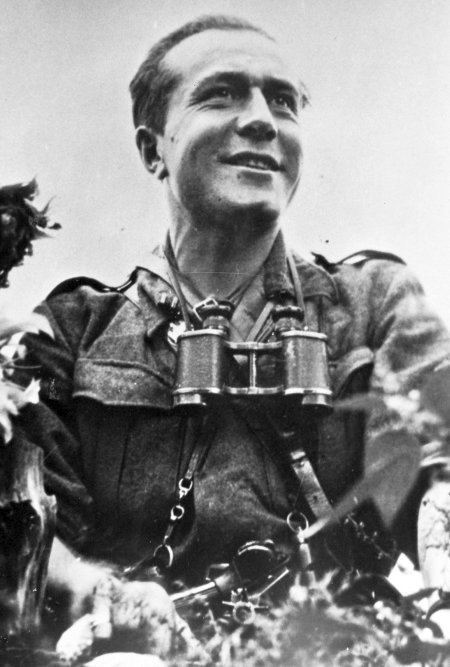
In July 1944 Rajs took part in Operation Ostra Brama against the German occupation of Wilno (now Vilnius, Lithuania). He was awarded Order Virtuti Militari for his heroism. During the Red Army advance into occupied Poland his commanding officer was arrested by the NKVD. Rajs took over the command of his battalion, and led them out to safety in the area of Puszcza Rudnicka forest. Under the Soviet military control the AK partisans were routinely disarmed. Thousands of them were arrested and sent to the Soviet Gulag. In October 1944 Rajs travelled to Białystok and under an assumed identity, joined the Związek Patriotów Polskich, controlled and directed from Moscow. From January 1945 he led the LWP platoon in the State Forest Defence Battalion near Hajnówka. In May 1945 he contacted the AK Major Zygmunt Szendzielarz – an avid anti-communist – who was recreating the already disassembled 5th Wilno Bridage of Armia Krajowa in order to oppose the Soviet occupation of Białystok. Rajs joined Szendzielarz with 29 soldiers under his command, and on 9 May 1945 became the leader of the 2nd Squadron in the 5th Brigade of AK.
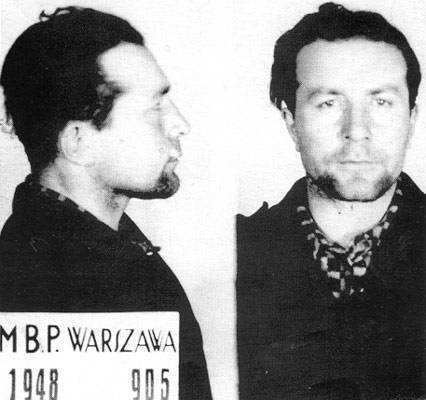
The executive order to disband AK entirely came from Gen. Leopold Okulicki on 18 January 1945. The 5th Brigade refused to carry it out. The shifting of the borders of Poland and the annexation of eastern half of the Second Polish Republic by Joseph Stalin was ratified by the new communist authorities in postwar Poland on August 16, 1945. The process of expulsions of Poles and Belarusians kicked into full swing. Remaining in Puszcza Białowieska and still growing in numbers, the 5th Brigade led by Szendzielarz fought a successful battle against the units of the Red Army, the pro-Soviet Polish People's Army, and the MBP security forces in around Miodusy-Dworaki village in Siemiatycze County on 18 August 1945. Nevertheless, faced with overwhelming concentration of the enemy forces, Major Szendzielarz ordered the dissolution of the 5th Brigade on 7 September 1945. Rajs refused to surrender.
National Military Union
Romuald Rajs made contact with Commandant of Okręg III Białystok of the National Military Union (Narodowe Zjednoczenie Wojskowe) Major Jan Szklarek, and moved his squadron under his command. Rajs was promoted to the rank of Captain and on 16 September 1945 became leader of the PAS Special Forces (Pogotowie Akcji Specjalnej) within NZW Białystok. The process of unification of smaller underground units, commanded by Kazimierz Chmielowski ("Rekin") in the area of Wysokie Mazowieckie County until December 1945, resulted in the gathering of the largest anti-Soviet partisan group in the region, engaging in skirmishes with the communist commandos of MBP, KBW and MO. The area of the Bielsk County was especially dangerous for the underground to operate in, because the MBP field units and the NKVD received information and logistical help from the local members of the former Communist Party of Western Belarus and the Communist Party of Poland in existence before the war started.
In early January 1946 NZW headquarters called a meeting of local commanders. Rajs was given leadership of partisans enrolled by Chmielowski ("Rekin"). His unit, consisting of 228 soldiers, was renamed as the 3rd Wilno Brigade of the NZW PAS. A decision was made to move the entire force to an area around Bielsk Podlaski for further military training. On 27 January the battalion arrived in Łozice village and requisitioned around 40 horse-drawn carriages from a big gathering of farmers arranged by the local authorities in need of conscripted labour. In the same evening, the battalion moved to Hajnówka County. Rajs ordered the attack on Hajnówka where the Polish communist militia as well as some Red Army soldiers were stationing. The attack was unsuccessful. The farmers with horse-drawn carriages remained with the battalion throughout January as means of transportation even though several failed attempts were made to replace them with new carriers.
Actions in Zaleszczany, Wólka, and Puchały Stare
On 29 January 1946 the battalion arrived in Zaleszany, Hajnówka County aiming to feed the horses. During a routine document check by the partisans, a Red Army soldier and NKVD informer, Aleksander Zielinko was identified, serving as Communist Party secretary in nearby Suchowolce. All inhabitants were ordered to report to a spacious house of Dymitr Sacharczuk where they were taken hostage. They were questioned on the whereabouts of suspected collaborator, and Sołtys of Zaleszany, Łukasz Demianiuk who vanished. His 16-year-old son Piotr (already a PPR member) was identified and executed together with Zielinko. Not a single hostage was killed from the gathering at Sacharczuk's house. According to official report released in 2005 by the Institute of National Remembrance conducting investigation into the matter, all hostages kept in Sacharczuk's house run out to safety and survived; they were not persecuted, but the PAS NZW set a number of other buildings on fire, and 16 people died in Zaleszany while attempting to hide from the soldiers. The final IPN investigation revealed that the later description of what happened there was falsified by the Stalinist functionaries. The unit led by Rajs ("Bury") departed for the neighbouring village of Wólka Wygonowska. Some farm buildings were set ablaze for refusal to provide assistance. Two local men were shot dead while they were running away from the soldiers: Jan Zinkiewicz i Stefan Babulewicz. Many year later, Zinkiewicz's daughter rationalized that her father run to save his farm equipment from burning, and that he was not fleeing from them.
On the following day of 30 January 1945 the command of NZW PAS Brigade arrived in Krasna Wieś village where they arranged the exchange of horse-drawn carriers. Eye-witness Włodzimierz K. from Jagodniki later testified that they arrived in Krasna Wieś ahead of others. Most of the partisan group fell behind. The farmers were ordered to wait for them but instead, took their horse-drawn carriages and run away. They were chased through the forest by the "Modrzew's" platoon, caught around Puchały Stare village, arrested, taken away, and executed in two groups. "Modrzew" himself was killed on 16 February 1946; his true identity is unknown. Years later, the exhumations conducted by the authorities in Puchały on 27 April 1951 revealed that 27 farmers have been killed there and buried in two shallow graves. In 1997 the number was raised to 30. The subsequent 2005 investigation by IPN revealed – based on new evidence – that purported eye-witness Prokop Iwacik lied in his postwar account of the massacre, because he could not have possibly been there.
Action in Szpaki–Zanie
At the end of January 1946 the soldiers of the 3rd Brigade came to Zanie to requisition food. One of the partisans, Kazimierz Borkowski, was struck with an axe to the head by a farmer who refused to give in. Rajs, who had already received information in Hajnówka, that ethnic Belarusians who lived in Szpaki–Zanie served as Volksdeutsche under Nazi Germany, gave an order for the pacification of the villages. However, during his postwar interrogations Rajs informed that the actual order of burning down Zanie, Szpaki and Końcowizna in retaliation for hostile attitude towards NZW, came from his superior Florian Lewicki nom de guerre "Lis" ("Kotwicz"), regional commandant of NZW (real name, Jan Szklarek). The NZW PAS unit consisting of three platoons of about 30 men led by "Rekin" (Chmielowski), "Wiarus", and "Bitny" (J. Boguszewski), was sent to Szpaki–Zanie on 2 February 1946. Rajs was not present. He went with his command to Końcowizna village, where no-one was killed. According to postwar interrogation of Kazimierz Chmielowski ("Rekin"), the NZW troops were fired upon by the locals in Zanie. Later report by the Special Commission from Bielsk Podlaski confirmed that a submachine gun with ammunition was found in one of the burned out buildings. A dozen farmhouses were set on fire and 36 men singled out for collaboration with the enemy were executed by the platoon led by "Rekin". The names of the men to be shot have been secretly obtained by the Armia Krajowa Obywatelska from Bielsk County. Subsequently, both "Wiarus" and "Bitny" (along with "Modrzew") were killed in action on 12 February 1946 in Gmina Ełk.
Chmielowski ("Rekin") also attacked other villages in gmina Kleszczele where some farmhouses where burned. According to Rajs, Chmielowski did it on his own accord, although Chmielowski himself insisted during questioning by the communist interrogators that bullets were fired up into the air. Notably, as many as five alleged pacification actions by "Rekin" were fabricated by the UB interrogators, since the village of Mostek never existed in the Bielsk County as revealed by the IPN investigation.
Arrest and execution
The 3rd Brigade of NZW PAS, led by "Bury" and "Rekin", was attacked on 16 February 1946 near the village of Gajrowskie by communist special forces equipped with armoured vehicles. Most partisans managed to escape the encirclement, with considerable losses. It was the biggest battle fought by them with the NKWD, UB, KBW and MO thus far. The next battle took place on 30 April 1946 near Czochanie-Góra in which 25 partisans were killed and 12 captured. On 9 August 1946 near Różyńsk Wielki two more officers died. In October 1946 Rajs split his group into three smaller, independent units, which were dispersed across three separate counties of the newly-formed Białystok Voivodeship. He received permission from the NZW regional headquarters to take a vacation. Rajs went to Karpacz, where he was captured by the Urząd Bezpieczeństwa on 17 November 1948. A month later, his co-conspirator Chmielowski was arrested on 13 December 1948. They were charged with membership in AK and NZW, aiming to overthrow the communist government of Poland, coupled with armed assaults on the Polish Army and the Red Army, the assassination of MO functionaries, attacks on the UB security outposts, the railway guard, as well as assassination of civilians during forced requisitions of property, and possession of assault weapons. Individually, Romuald Rajs was also charged with desertion from the Polish Army. They were executed on 30 December 1949 without material evidence of alleged civilian atrocities, which were obtained by the communist authorities well over a year later, in the spring of 1951.
Posthumous history
The communist courts ordered the exhumation of the two graves near Puchały Stare on 27 April 1951. No medical doctor and/or pathologist was present at the dig. The official report of the exhumation listed 22 skeletal remains found in one mass grave, and 5 in the second one. The remains were laid in 3 coffins and transported to Klichy village nearby, where they were buried in the Catholic cemetery. None of the persons who took part in the 1951 exhumations was later questioned. In 1995, almost 50 years after the fact, the Military Court of Warsaw posthumously nullified the death penalty received by Romuald Rajs. By the time of the post-communist research by IPN (which took place in 1997, and again in 2002), none of the participants of the original exhumations were still living.
In their own investigation which ended in 2005, the Institute of National Remembrance analysed documents and testimonies of the 1949 show trial, and interviewed a total of 169 persons. Among the individuals questioned by the IPN were families of victims as well as former soldiers of the 3rd Brigade of NZW. The IPN investigation established that the original testimony by Prokop Iwacik had no grounds in reality because he could not have been there; his own son testified that Iwacik went into hiding for three days. The subsequent description of terrific murders in Puchały Stare contradicted one of the key tenets of forensic science; the fracturing of bones was produced by bullets and not by blows as alleged. It was Iwacik who claimed that ethnic Belarusian carriers were singled out for the execution in Puchały, but according to statement by Michał T. the carriers were selected for the exchange based on quality of their horse-drawn carriages alone. Among the many child witness reports collected by the IPN there were also testimonies confirming that local farmers were among the assailants. Maria K. from Zanie testified that her mother was killed by a man from a neighbouring village, known to her brother.
